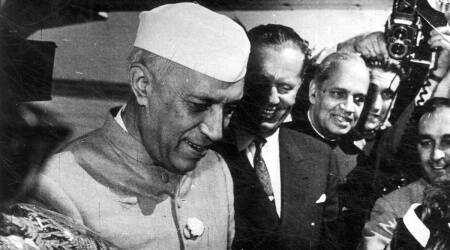Live Classes

The narcotics trade is assuming dangerous proportions all over the world. It is a social problem that harms youth and families and the money it generates is diverted for disruptive activities that have bearings on national security. The issue has kept security agencies and law enforcement agencies on the tenterhooks. India is no exception.
Major global regions of drugs and India:
Traditionally India has been seen as sandwiched between the Death (Golden) Crescent and Death (Golden) Triangle. The country is being flooded with drugs, especially heroin and methamphetamine, from these two regions by drug lords indirectly supported by intelligence setups. Nearly 90 per cent of the world’s demand for these drugs is being met from these two regions. India is both a big market and a transit route for other countries.
Money generated in this illicit trade is phenomenal. There are indications that parts of Pakistan adjoining Afghanistan are also used by Pakistani drug traffickers to convert Afghan opium to heroin. The Shan and Kachin provinces of Myanmar bordering China also pose challenges. These heroin and methamphetamine-producing areas have porous borders and are, reportedly, under the control of rebel groups, indirectly supported by the Chinese. Illicit arms are manufactured here and supplied to underground groups active in India.
The maritime route has also become very active after the recent developments in Jammu and Kashmir. The use of drones to supply drugs and weapons across the border in Punjab is a new phenomenon and law enforcement agencies are working out strategies to neutralise this. The Indian Coast Guard (ICG), in conjunction with the intelligence agencies, has been making big seizures frequently. ICG has developed a good synergy not only with the security agencies but also with the coast guards of Sri Lanka, Maldives and Bangladesh. It seized 2,160 kgs of meth in two different instances recently near the Andaman and Nicobar Islands. The drugs were destined for Thailand from Myanmar. Investigations have indicated the connection of drug traffickers from across borders with terrorist organisations like Lashkar-e-Toiba and Hizbul Mujahideen. The illegal money is used for terror activities sponsored by the ISI.
India has surprisingly also become a hot destination for cocaine, the supply of which is controlled by South American drug cartels. Recent investigations have revealed the connection of these cartels with NRIs based in Canada, Australia, Singapore, Hong Kong and several European countries along with local drug lords and gangsters in India, who have links with Khalistani terrorists and the ISI in Pakistan. The role of the fugitive don Dawood Ibrahim and his gang has been under scanner.
New sources of financing and transit of drugs:
Studies reveal that 62 per cent of the darknet is being used for illicit drug trafficking. Darknet markets are disrupting traditional drug markets because of their anonymity and low risks.
Cryptocurrency payments and doorstep deliveries, through courier services, have made darknet transactions attractive. Concerted and coordinated efforts of all the agencies will be required to tackle this growing threat. The success rate in catching traffickers using the darknet has been very low the world over. However, in January-February, the Narcotics Control Bureau busted an organised racket of darknet vendors and arrested several Indian nationals.
Their international counterparts were exposed for the first time. Technical surveillance followed by basic policing methods led to the seizure of large consignments of drugs and the arrest of the gang. The operation exposed various international connections. Drug cartels all over the world are networked and are using the darknet in a big way for trafficking narcotics, especially pharmaceutical opioids/synthetic drugs made in labs using deadly chemical precursors.
A new trend has emerged wherein organised gangs, which primarily used to carry out extortion activities in their local areas, are getting hooked to this network, and are being used for drug trafficking and gun running. Quick, and more, money attracts them to such activities, but knowingly or unknowingly they are getting into the trap of ISI and Khalistani elements settled abroad, especially in Canada, Germany, the UK, USA. It is easier for these terrorist groups to use these networks because they get ready-made logistics to carry out their activities. The nexus between terrorists and organised gangs/underworld is a new and disturbing trend, which has to be tackled effectively by security agencies.
Narcotics Control Bureau
Government Initiatives to Tackle Drug Addiction:
Download pdf to Read More